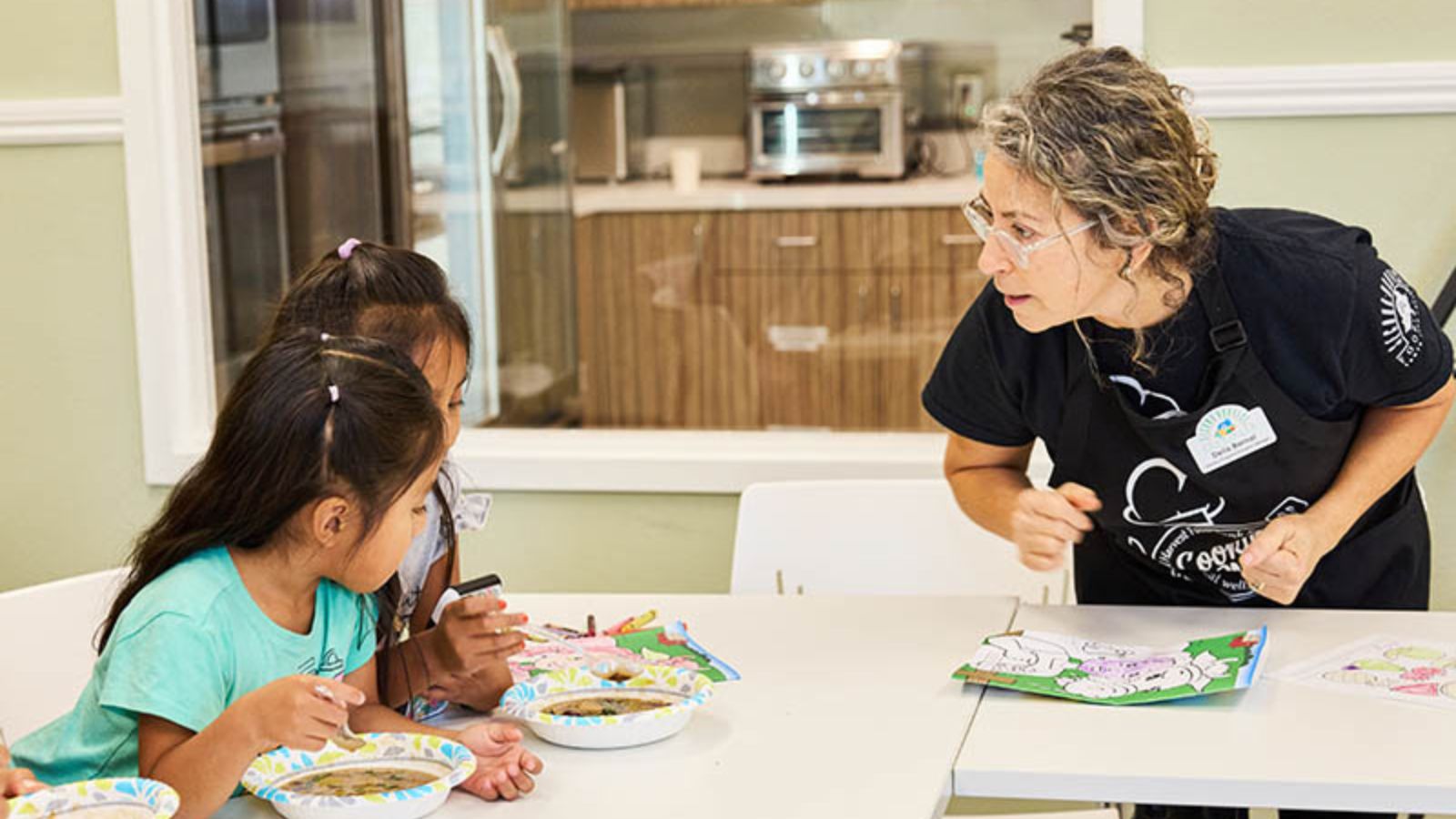Second Harvest Food Bank Programs Teach Eating Good Can Be Affordable
“Ewww…it’s so green – I don’t want to eat that!”
When kids first join one of Second Harvest Food Bank’s Cooking Clubs, this can be a common reaction to the Vegetarian Pesto Pasta recipe. But rather than being an obstacle, it becomes an ideal learning opportunity.
“Our Cooking Clubs are all about exposure,” said Vanessa Arizmendi, Wellness and Nutrition Director for Second Harvest Food Bank. “They are designed to introduce young people to nutrition concepts, ingredients, spices, cultural dishes, and other food-related concepts that support a holistic approach to health and wellbeing. We want to open their minds and their taste buds!”
Second Harvest’s overall mission is to address the root causes of food insecurity and health disparity. With the sharp rise of health concerns such as obesity, diabetes, high blood pressure and other chronic diseases among young children and their families, this work has never been more important.
“Cooking Clubs are a great place to start,” Arizmendi said, “because nutrition education at a young age is one of the best ways to change these troubling health trends. We want to plant seeds about healthy eating at a young age.”
The Cooking Clubs are led by Delia Bernal, Second Harvest’s Nutrition Education Manager, who developed a curriculum and menus that make it fun for kids to learn about what they’re putting into their bodies, what they can cook at home and to give them the basic culinary skills that make it easy to prepare healthy, nutritious, tasty meals. The Clubs emphasize hand washing and even incorporate age-appropriate knife skills to ensure the young chefs prepare clean food in a safe environment.
One of the Second Harvest team’s Cooking Clubs is currently hosted as part of the After School Program at Starlight Academy in Watsonville, which has a beautiful kitchen.
Third and Fourth graders join the sessions twice per month for the whole school year. The lessons seek to keep kids interested and engaged, even when the topic is something like the importance of getting enough fiber.
“We base a recipe around that core concept and the kids get to prepare and taste the dish together,” Arizmendi said. “Then they are like, ‘wow, fiber is yummy’ – which is when we know they are really getting it.”
Feedback is fundamental to the Cooking Clubs. Ideally, the Clubs extend over a six-month period so the Second Harvest team can measure progress against key goals.
“We conduct surveys of Cooking Club members before and after their sessions to assess everything from opening their minds to new foods, flavors and ingredients to how the meals may be impacting their weight, blood pressure, insulin levels or other health measures,” Arizmendi said. “We want to give them all the tools, tips and tricks so they can apply healthy nutrition in their daily lives.”
The program also seeks to end a vicious cycle associated with food insecurity. Among the food insecure, limited budgets often lead to poorquality food choices.
But over time, a less-than-nutritious diet can lead to more sick days, chronic illness or other long-term health issues. This then can impact one’s ability to work and earn a steady income. Illness related to poor nutrition can also increase medical bills and healthcare costs. So those poor-quality food choices driven by a tight budget can come all the way back around to further straining one’s financial situation. It’s a terrible cycle.
“If we can help educate folks that eating healthy food doesn’t have to be more expensive, we can break this cycle,” Arizmendi notes. “We want our communities to understand that there doesn’t necessarily need to be a trade-off. It may take a bit of effort, but we are here to help. Because the fact is you can eat well, and it can still be affordable.”
In addition to Cooking Clubs, Second Harvest offers cooking demos, which are offered like a field trip to the kitchen at the food bank’s distribution center in Watsonville. Kids can tour the facility, learn about healthy nutrition, and, depending on their age, perhaps even help with food distribution as a volunteer. High school age youth can also volunteer at the Cooking Clubs, serving as mentors.
Second Harvest has ambitious goals for the future and has already expanded to offer a Cooking Club for expectant mothers. “We’d like to start Cooking Clubs at apartment complexes, community centers and other locations so we can reach even more of our community,” Arizmendi said.
Arizmendi reflects on the program, “Whether kids are learning how much sugar is really in that sugary drink or tasting Bok Choy or Curry for the first time, you can see the light bulb going on over their heads. The experience is so heartwarming.”
Again, Arizmendi emphasizes, it’s all about exposure. “They learn something new every time they come to a Cooking Club. And sometimes they say, ‘I would never have tried this, but, you know, I think my whole family will like it.’ And when that happens, we know we’ve inspired them and they are on their way to a healthier future.”
For more information visit thefoodbank.org




